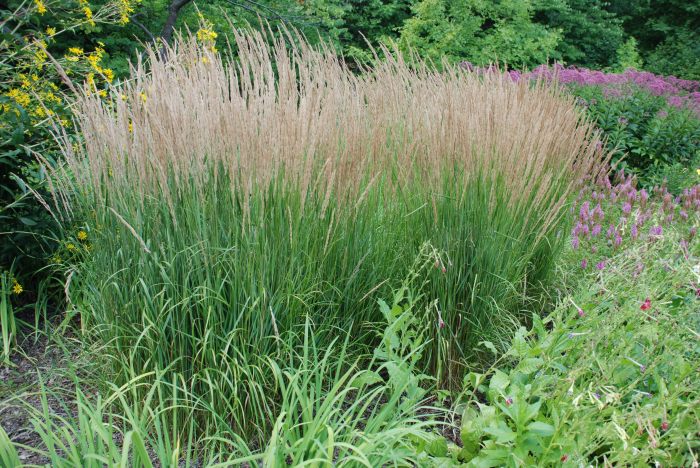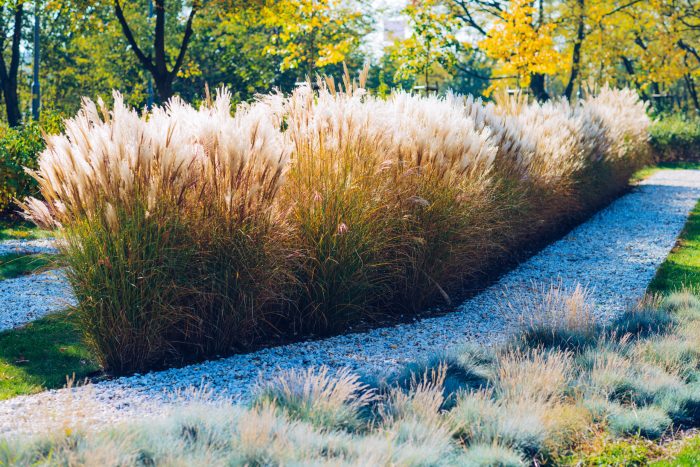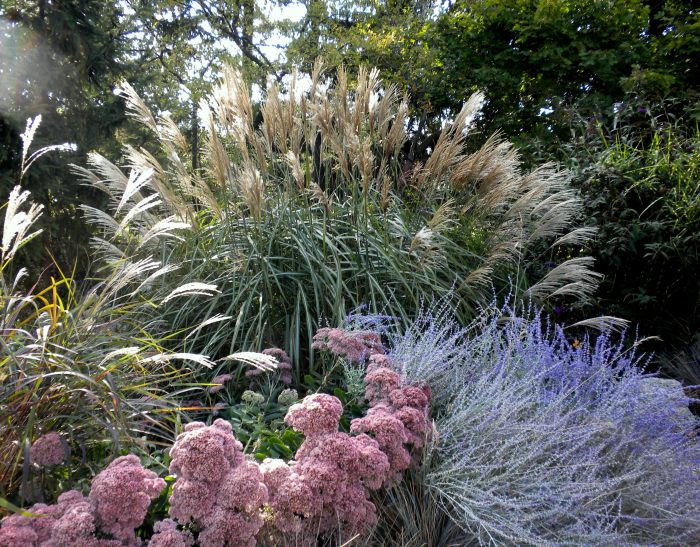Ornamental grasses, with their captivating textures, graceful movements, and vibrant colors, have become a beloved choice for landscapers and gardeners alike. Their versatility and adaptability make them a perfect addition to any outdoor space, offering endless possibilities for creating stunning and dynamic landscapes.
From the towering plumes of Miscanthus to the delicate threads of Carex, the diverse range of ornamental grasses offers a kaleidoscope of forms, hues, and textures. Whether used as standalone specimens, incorporated into borders, or woven into meadows, these grasses add a touch of elegance and drama to any setting.
Ornamental Grasses in Landscaping

Ornamental grasses have become increasingly popular in landscaping due to their versatility, low maintenance, and aesthetic appeal. These grasses can be used in a variety of ways to create stunning landscapes that add texture, movement, and color.
One of the most common uses for ornamental grasses is as a border or edging plant. Their upright growth habit and dense foliage make them ideal for defining pathways, flower beds, and other landscape features. Some popular choices for borders include:
- Japanese Forest Grass (Hakonechloa macra)
- Variegated Liriope (Liriope muscari ‘Variegata’)
- Dwarf Mondo Grass (Ophiopogon japonicus ‘Nana’)
Ornamental grasses can also be used as groundcover, providing a low-maintenance alternative to traditional lawn grass. Their dense growth habit helps to suppress weeds and erosion, making them ideal for slopes and other challenging areas. Some good choices for groundcover include:
- Blue Fescue (Festuca glauca)
- Creeping Jenny (Lysimachia nummularia)
- Baby’s Tears (Soleirolia soleirolii)
Taller ornamental grasses can be used to create a dramatic focal point in the landscape. These grasses can be planted in groups or as a specimen plant, and their graceful movement in the wind adds a sense of tranquility to the garden.
Some popular choices for focal point grasses include:
- Pampas Grass (Cortaderia selloana)
- Maiden Grass (Miscanthus sinensis)
- Zebra Grass (Miscanthus sinensis ‘Zebrinus’)
In addition to their aesthetic appeal, ornamental grasses also provide a number of environmental benefits. They are drought-tolerant and require minimal watering, making them ideal for water-wise landscapes. Their dense root systems help to stabilize soil and prevent erosion, and they can also provide food and shelter for wildlife.
Ornamental grasses are a great way to add texture and interest to your garden. They come in a variety of colors, shapes, and sizes, and many of them have colorful foliage. For example, Japanese blood grass has burgundy-red leaves, while fountain grass has variegated leaves of green and white.
If you’re looking for plants with colorful foliage, ornamental grasses are a great option. You can find more information about plants with colorful foliage here.
Overall, ornamental grasses are a versatile and low-maintenance addition to any landscape. They can be used in a variety of ways to create stunning effects, and they provide a number of environmental benefits as well.
Design Considerations for Ornamental Grasses

When incorporating ornamental grasses into your landscape design, several principles can help you achieve a visually appealing and cohesive result.
Contrast and balance are essential elements in creating a successful ornamental grass design. Varying the heights, textures, and colors of grasses can add interest and depth to your landscape. Taller grasses can serve as a backdrop for shorter varieties, while contrasting textures, such as fine-leaved and coarse-leaved grasses, can create a dynamic effect.
Incorporating grasses with different hues, such as blue-green, silver, and burgundy, can further enhance the visual appeal.
Successful Ornamental Grass Designs, Ornamental grasses
In various landscape settings, ornamental grasses have been used to create stunning designs. For example, in a contemporary garden, tall fountain grasses can provide a dramatic vertical element, while low-growing sedges can fill in the foreground. In a traditional cottage garden, ornamental grasses can add texture and movement, complementing flowering plants and shrubs.
In a coastal landscape, salt-tolerant grasses, such as sea oats and cordgrass, can thrive in harsh conditions and create a naturalized look.
Final Conclusion

In conclusion, ornamental grasses are a captivating and versatile addition to any landscape. Their ability to add texture, movement, and color makes them a valuable tool for creating visually stunning and dynamic outdoor spaces. With proper care and maintenance, these grasses will thrive and continue to bring joy and beauty for years to come.